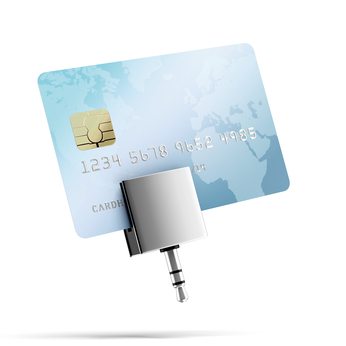 Over 50 percent of smartphone owners polled by the Credit Union Nat’l Association (CUNA) use their phone to make purchases. Between this, and products like the new Loop card reader making that easy process even easier, mobile payments are a just a piece of the new virtual puzzle. There’s a bright future here, and not just for the consumer.
Over 50 percent of smartphone owners polled by the Credit Union Nat’l Association (CUNA) use their phone to make purchases. Between this, and products like the new Loop card reader making that easy process even easier, mobile payments are a just a piece of the new virtual puzzle. There’s a bright future here, and not just for the consumer.
E-commerce isn’t a young practice anymore, as incredulous as we can still be when punching 16 digits into a “checkout” box and expecting a package three (business) days later. Online retail is an undeniably growing industry, and there’s proof in the pudding. 65 percent of holiday shoppers this winter plan on going online to supplement purchases they’ll ultimately make in-store, Internet Retailer reported from an Accenture survey. The benefit for businesses is that their staff isn’t doomed to seeing their careers turn from sales to IT.
This stat alone fosters a few other interesting ways to feed the revenue streams of the retailer that opts for a bigger web presence. Mobile payment means convenience, but not just for the customer. A convenient purchase is a convenient profit, meaning there’s less of a chance that a customer will turn away from a product due to personal circumstances like distance from a computer or a store. With the help of a mobile marketplace, in addition to the credit card reader, convenience is twofold:
1. Users visiting a store via mobile don’t just have a digital shopping cart; they have a digital voice. Online reviews of items people were happy to buy will promote quicker than word of mouth, encouraging conflicted shoppers to pull the trigger.
2. Sad it may be for how impatient we are, it makes the real-life store no less eligible for ease in the shopping experience. Loop, a new e-commerce service discussed by TechCrunch, turns your smartphone into a transaction piece with a portable slit through which to swipe your card, and an app to process the payment. Beating issues of compatibility with user bank accounts and company bar codes, Loop offers crowd and line control by expanding the point of sale beyond just the cash register, allowing retailers to limit the number of customers walking away due to perceived wait time.
Seventy-eight percent of CUNA respondents, though mobile customers, are concerned with the protection of their financial information. But while security comes with the mobile commerce territory, the number of individuals using their phones to dictate buying decisions is impossible to ignore. Businesses should take advantage of the opportunities available in mobile payments, with proper data management being an obvious priority as they move further into one of the fastest-growing practices in the mobile community.


